Formwork can be made out of a large variety of materials.
The material most commonly being used to date is timber. However, due to the depleting forest reserves and increasing cost of timber the use of alternate materials such as plywood and steel has become prominent.
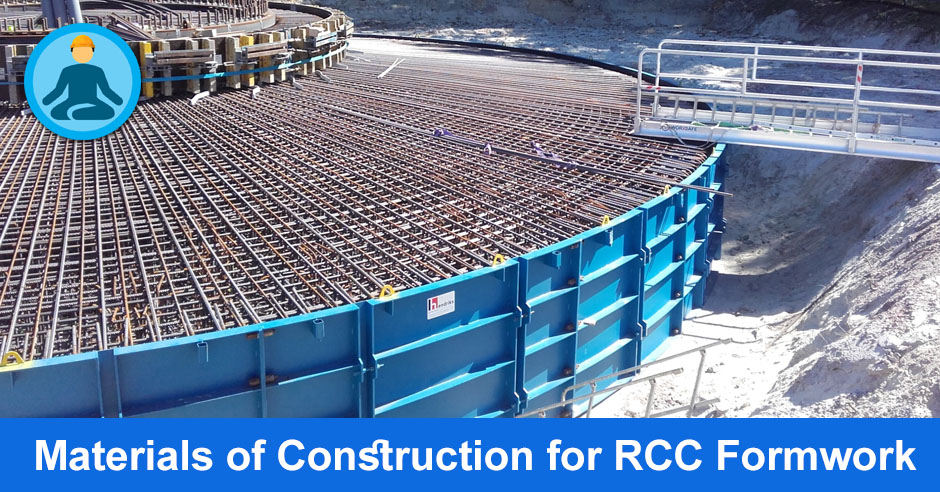
More recently, materials such as plastics and fiberglass are also being used for pre-fabricating formwork. The type of material to be used depends on the nature of construction as well as availability and cost of material. The constraints on the project such as overall cost, time of completion also play a major role in the use of a particular material for formwork.
Timber Forms
Timber is required for practically all jobs of formwork. The timber bring used for formwork must satisfy the following requirements:
- It should be durable and treatable
- It should have sufficient strength characteristics
- It should be light weight and well seasoned without warping,
- It should hold nails well.
Advantages of using timber forms:
- It is economical for small construction jobs.
- It is design flexible and easy to erect.
- It has good thermal insulation which makes it useful to be used in colder regions.
- It can easily be made into any shape or size.
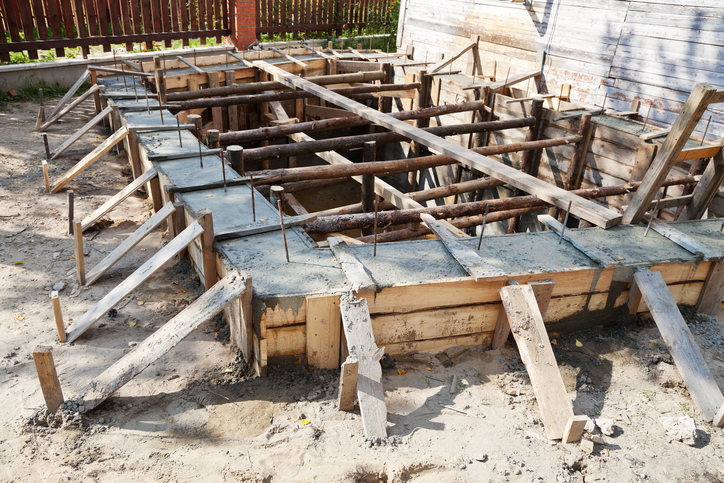
Plywood forms (in combination with timber)
Concrete shuttering plywood is bwp grade plywood, preservative treated and specially suited for use in concrete shuttering and formwork.
The plywood is built up of odd number of layers with grain of adjacent layers perpendicular to each other. Plywood is used extensively for formwork for concrete, especially for sheathing, decking and form linings.
There are two types of plywood – internal and exterior. The interior type is bonded with water resistant glue and exterior type is bonded with water proof glue.
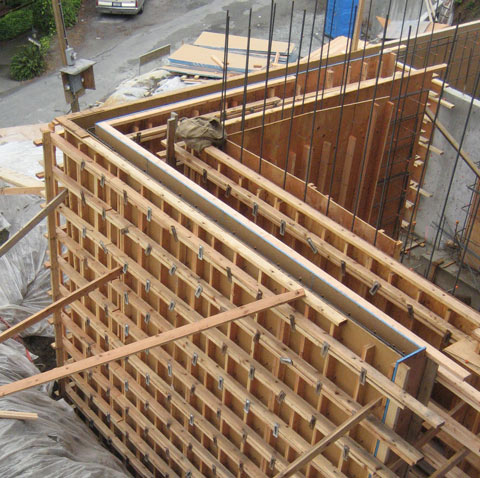
Hardboard forms
Hardboard is a board material manufactured of wood fiber, which is then refined or partly refined to form a panel having a density range of approximately 50 to 80 pounds per cubic foot.
Hardboards are standard / non-tempered or tempered. The tempered one being used for formwork. Tempered hardboard is solid or perforated hardboard panels impregnated with resin under high pressure to make them stronger and more resistant to moisture and abrasion.
The boards available in large sheets have a hard, smooth surface that produces a concrete whose surface is relatively free of blemishes and joint marks.
The thin sheets can be bent to small radii, which is an advantage when casting concrete members with curved surfaces.
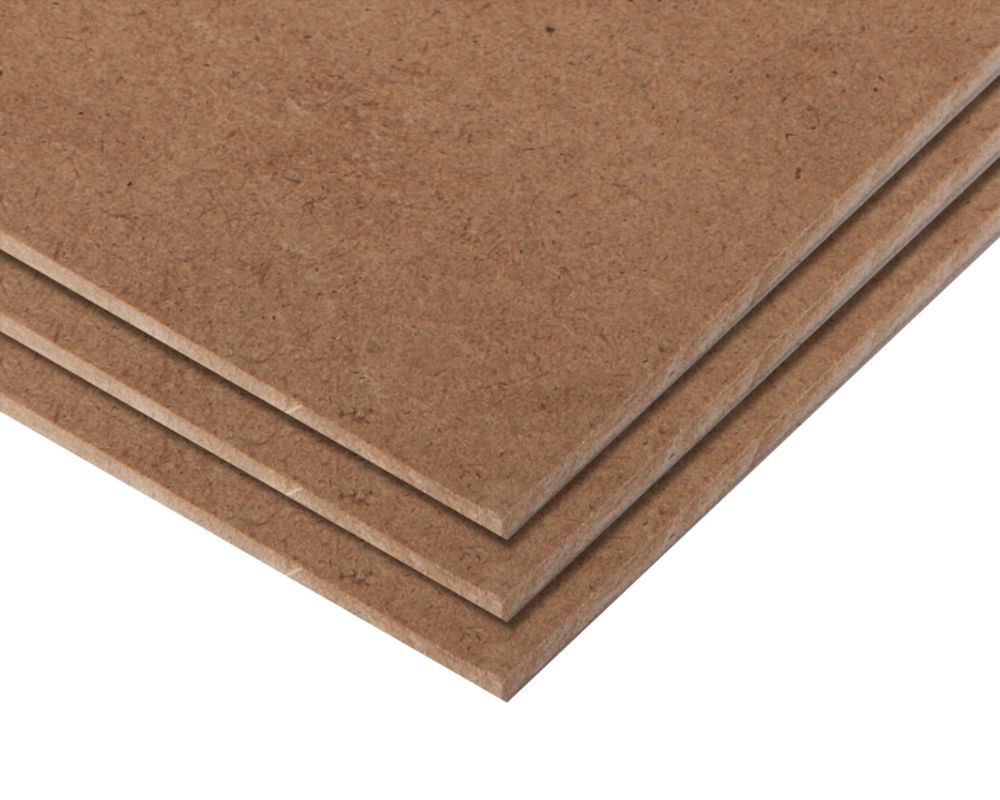
Aluminium Forms
Forms made from aluminum are in many respects similar to those made of steel. However, because of their lower density, aluminum forms are lighter than steel forms, and this is their primary advantage when compared to steel.
As the strength of aluminum in handling, tension and compression is less than the strength of steel, it is necessary to use large sections.
The formwork turns out to be economical if large numbers of reuses are made in construction. The major disadvantage of aluminum forms is that no changes can be made once the formwork is fabricated.
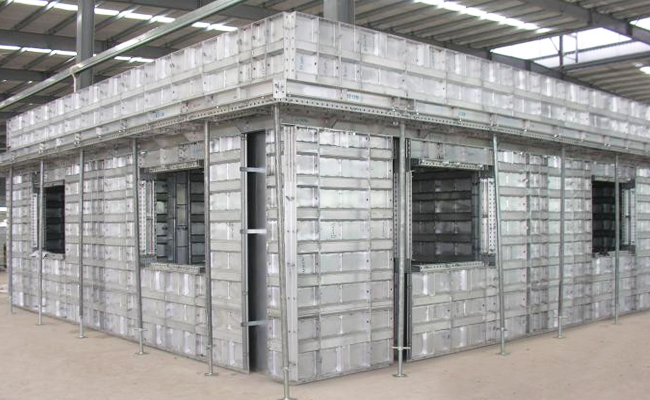
Plastic Formwork
These forms have become increasingly popular for casting unique shapes and patterns being designed in concrete because of the excellent finish obtained requiring minimum or no surface treatment and repairs.
Different types of plastic forms are available like glass reinforced plastic, fiber reinforced plastic and thermoplastics etc.
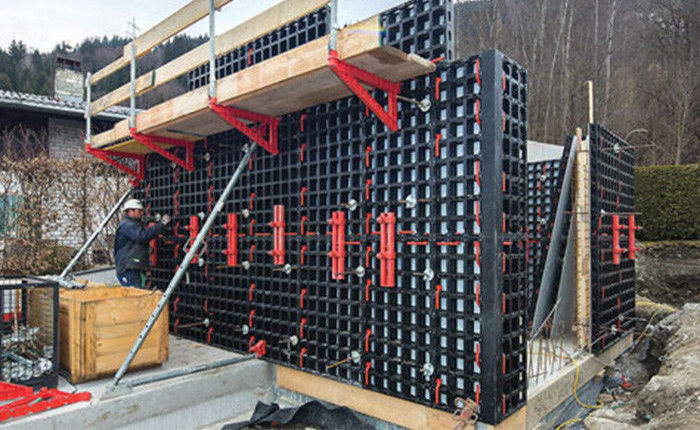
Fiberglass-reinforced plastic is the most common and has several advantages such as :
- The material allows greater freedom of design.
- Unusual textures and designs can be molded into the form It allows the contractor to pour structural and finished concrete simultaneously.
- Because sections can be joined on the job site in such a way so as to eliminate joints, there is no size limitation If carefully handled, a number of reuses are possible making it highly economical.
- It is lightweight and easily stripped.
The disadvantage of using plastic forms is that :
- It does not lend itself to field fabrication Hence, the design and planning of this form must be carefully carried out.
- Also care must take not to damage the plastic by the heat applied for accelerated curing of the concrete.
Trough and waffle units in fiberglass are used in construction of large floor areas and multi-storied office buildings.
Steel Formwork
Mostly used in large construction projects or in situations where large number of re-uses of the same shuttering is possible. Suitable for circular or curved shaped structures such as tanks, columns, chimneys. Etc. & for structures like sewer tunnel and retaining wall.
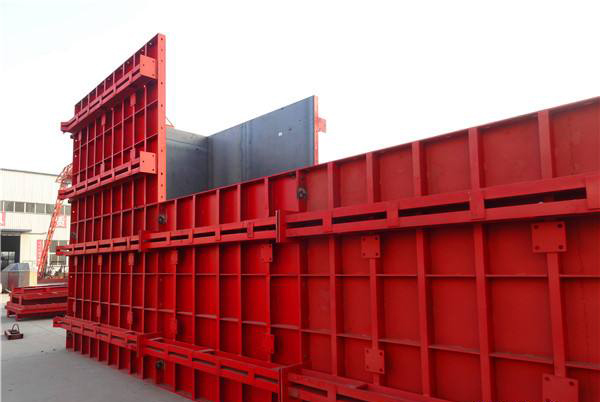
Advantages of steel formwork over timber form:
- Strong, durable & have longer life.
- Reuses can be assumed to vary from 100 to 120 whereas timber varies from 10 to 12.
- Steel can be installed & dismantled with greater ease & speed resulting in saving in labour cost.
- Excellent quality of exposed concrete surface obtained. Thus saving in the cost of finishing the conc. surface.
- No danger of formwork absorbing water from the conc. & hence minimizing honeycombing.
